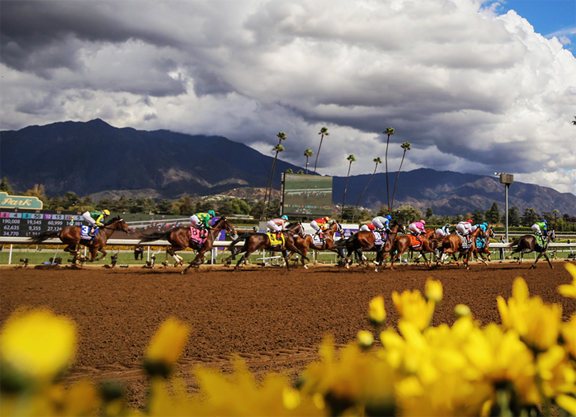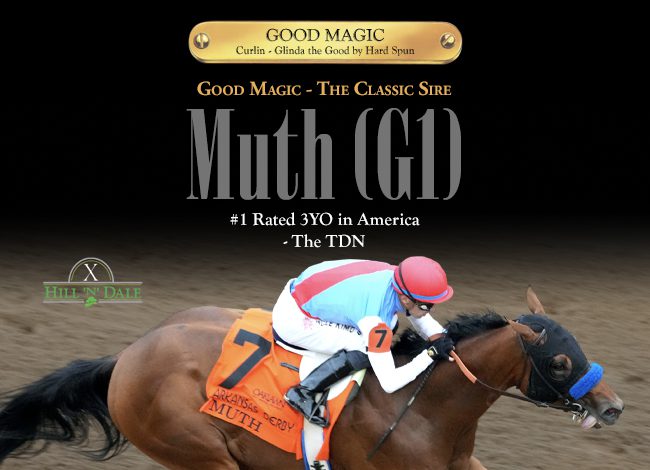By Dan Ross
The Thoroughbred Owners of California (TOC) and The Stronach Group (TSG) have reached an agreement on the issue of Lasix, and racing will resume at Santa Anita Friday Mar. 29, pending approval by the California Horse Racing Board (CHRB) on a new set of safety and welfare protocols. State regulations require a 10-day approval process and, so, the next scheduled CHRB meeting has been pushed back from Mar. 21 to Mar. 28, to accommodate the proposed regulations.
If approved, both Santa Anita and Golden Gate will race with these new protocols in place.
As part of the new changes, the maximum amount of Lasix allowed will be halved from 10 cc to 5. All horses born prior to 2018 will race at Santa Anita and Golden Gate with the same Lasix guidelines. Horses born in 2018 (i.e. 2-year-olds of 2020) will be the first crop to race completely Lasix free.
“This is a complete revision of the current medication policy for Thoroughbred racing. We have worked through the implementation of this groundbreaking model with our stakeholders and the California Horse Racing Board,” said Belinda Stronach in a statement released Saturday evening. “TSG is committed to the principles of safe horse racing for both equine and human athletes and to making California racing the best in the world. It is my hope the other tracks in California will follow suit. TSG will begin consultation with our stakeholders in other states to put these standards into effect in those jurisdictions, in the best interest of horse racing.”
“I very much appreciate the efforts made by The Stronach Group, the TOC, and the CTT in coming to this agreement, to improve and enhance horse and rider safety,” said CHRB chairman Chuck Winner. “The CHRB will continue to work with the stakeholders as they move forward. I plan to move the previously scheduled Mar. 21 board meeting to Mar. 28 in order for the full board to consider and take action on those items on which CHRB approval is required. Mar. 28 allows for the legally required 10-day public notice.”
Saturday's press release detailed a number of new and previously announced changes:
• Complete transparency of all veterinary records
• Strict limitations on the use of any pain or anti-inflammatory medication and treatment, including legal therapeutic NSAIDS, joint injections, shockwave therapy, and anabolic steroids
• Trainers must apply for permission to work a horse (a timed, high-speed training exercise) at least 48 hours in advance.
• No therapeutic medications of treatments will be allowed without a qualified veterinary diagnosis from a state licensed veterinarian.
• Significant and strict Out-of-Competition Testing (OCT)
• Increasing the time required for horses to be on-site prior to a race
• A substantial investment by The Stronach Group in diagnostic equipment to aid in the early detection of pre-existing conditions
“Santa Anita, Golden Gate and the TOC are also in alliance to change the use of the cushion crop. This evolution of a centuries-old practice will only allow the use of the crop as a corrective safety measure. This new directive has already gone into effect during training hours,” the statement read.
“We appreciate the willingness of Belinda Stronach of TSG and Jim Cassidy [President of California Thoroughbred Trainers] to negotiate in good faith and reach today's agreement,” said Greg Avioli, President and CEO of TOC. “I am confident we all share the same goal of making California racing safer and doing everything we can to provide additional safety and protection for our horses.”
According to the statement, “this agreement will effectively phase out all race-day medication at Santa Anita and Golden Gate under rules consistent with, or more restrictive than, the International Federation of Horseracing Authorities (IFHA) standards. The IFHA regulations are in effect at major racetracks throughout the world and are the benchmark for equine safety and welfare.”
“Lasix is an efficacious medication for the treatment of Exercised-Induced Pulmonary Hemorrhage (EIPH) and has been legal in California for almost a generation of trainers,” said Dionne Benson, DVM, Executive Director and COO of the Racing Medication & Testing Consortium (RMTC). “This change will require many trainers to manage their horses without the aid of this medication in racing for the first time ever. In order to ensure this is done properly and thoughtfully, we need to allow time for this adjustment.”
The TOC announced some of these new measures to its members during a conference call Saturday afternoon.
Only 24 hours before, after a meeting between representatives of TSG and various stakeholders fell apart, Santa Anita management decided not to re-open the track for live racing Mar. 22 as scheduled.
The various parties were unable to reach an agreement on how and when to ban Lasix, part of a series of changes TSG announced Thursday, including a new policy to increase the ban on legal therapeutic NSAIDs, joint injections, shockwave therapy and anabolic steroids. There will also be “complete transparency” of all veterinary records, and increased out-of-competition testing.
Besides the issue of Lasix, the two California horsemen's groups, the TOC and the California Thoroughbred Trainers, appear to be in broad agreement with the other aspects of TSG's announced changes.
“I don't see a lot of issues, consternation, etcetera, with the majority of what else was in the bullet points, again, subject to seeing the final details,” the TOC's chief executive officer, Greg Avioli, told TDN Friday. “It's clear that no one is advocating for continued practices that are, or are fairly interpreted as, drugging horses, masking injuries, right? That's not the perception our sport needs, and if there are adjustments to our rules and policies to make that even stronger, we should.”
A failure on the part of the TOC and TSG to reach an agreement would have raised serious questions concerning the racing calendar in Southern California.
On the agenda at the previously scheduled CHRB meeting Thursday. Mar. 21 at Golden Gate, was a contingency plan in the form of a discussion and action by the Board “regarding the Board's authority to transfer a race meeting or a portion of a race meeting to another track.”
CHRB executive director Rick Baedeker explained that the board has the authority to transfer race dates from one track to another track if it receives approval from both participating tracks. If the CHRB doesn't receive approval from both tracks, then the board has the authority to unilaterally move race dates around, but only if it receives a race dates application which is subsequently posted for at least 10 days. If necessary, the board can hold an unscheduled board meeting at the end of those ten days.
Not a subscriber? Click here to sign up for the daily PDF or alerts.






